| Umělec magazine 2008/2 >> Culture Chokes; Art Liberates | List of all editions. | ||||||||||||
|
|||||||||||||
Culture Chokes; Art LiberatesUmělec magazine 2008/201.02.2008 Jiří Přibán | essay | en cs de es |
|||||||||||||
|
Art’s defense against the public’s furies
We all surely know Kafka’s short story Josephine the Singer, or the Mouse Folk very well. Josephine can please the crowds with her art, although the Mouse Folk are not entirely musical, and don’t really care for music or singing at all. Everyone finds her singing unique, even though in reality it’s not singing but really just squeaking. But so what would make Josephine special, what would make her the most prominent singer loved by the whole nation? Everyone in the Mouse nation knows how to squeak! Josephine’s singing is admirable because of the things her admirers do not admire about themselves. While everyone’s squeaking is common and banal, Josephine’s squeaking, though undistinguishable, is so unique for no other reason than that it’s Josephine who’s squeaking. Josephine feels special and thinks that the Mouse nation is devoted to her, and that her squeaking leads and protects the nation. But the nation isn’t unconditionally devoted to Josephine and in reality the nation listens to her singing only because it is “almost reminiscent of our nation’s rough life in the turmoil of the hostile world.” So everyone listens to her voice only as to a “voice of their own nation.” Not uniqueness, but mediocrity and compatibility are what the Mouse nation admires about her squeaking! While Josephine thinks that she is singing for the whole nation as its voice, the nation devotes itself to her squeaking because it is undistinguishable from the squeaking of everyone else. Common banality passes off as noble art, compatibility as talent. And when Josephine, this “voice of a nation,” stops singing and starts hiding because of her nobility, “the nation, calm, without disappointment, sovereign, a mass consisting of itself, which pronouncedly – though it seems to be otherwise – can only give gratuity, not receive, not even Josephine’s, this nation just lives on” and Josephine is forgotten deep in the nation’s history. Kafka tells this short story of Josephine’s nightmares and the nightmares of all “hunger artists” with fresh irony and wit. The fear of a mediocre mass that cannot see their talent. The lust for fame that cannot be imagined without that mass. The pleasure of creating and the general lack of understanding, which hides behind adoring an artist. Not understanding the surrounding world and not being able to capture it in your work. Finally the banality behind the illusory artistic genius, whose corpse, just as in Kafka’s Hunger Artist, has to be removed from a desolate circus cage by attendants, so a new attraction could be moved in – “a young panther” at best. Kafka’s trapeze artists, hunger artists, or singing artists are put before dull crowds and live in illusions. This shapeless mass or nation admires them for their creative talent, which is laughingly banal in reality. The masses of admirers love them only when they are doing what is demanded, what is mass entertainment. No wonder that the impresarios take very good care of such artists, but are always on the lookout for some better “number” to take their place in the circus program. Every hunger artist is predestined to be forgotten. Behind a seemingly tragic situation hides absurd humor and a world where the artist displays an ascetic form of life and has to advance their cage to panthers, because their mouths radiate with such joy of life, that the audience can hardly resist. To better capture modern philosophy we need a beast and its master, rather than an eccentric artist whose actions only prove how much he doesn’t understand life. With Beckett’s Vladimir and Estragon already boldly peeking into Kafka’s world of circus impresarios and their protected artists! +++++++ An artist creating in modern mass society will always meet with Kafka’s characters’ tragicomic torment, the feeling that one's own doings are banal, and a dull public environment he has to turn to. The great French artist Jean Dubuffet once said that today’s mass society and it’s “values” and “laws” will gradually eat up the free and unique world of creating art. Artists care too much about politics and business rather than caring about their individual voice. They are dominated by lust for superiority, for uniqueness, and privileges instead of the free joy of a vigorous spirit. Imitation wins over originality, idea over imagination. Intellectuals and cultural bodies advise what is culture, the public is indoctrinated by their opinion and artists try to adapt, so they can please the majority’s taste. Culture “counterfeits art, which loses its spontaneity, and transforms its natural role of the wind for a role of a sand carrier,” continues Dubuffet. He sees modern culture as a “choking” culture, because it indoctrinates a person and forces him an image of mandatory cultural forms and values. Choking Culture is a part of a discouraging state apparatus that mobilizes “patriotic consciousness” in society and then uses it to establish new forms of state religion. At universities they tell you what are objective cultural values, categorical verdicts on how to use texts the right way are carried out in literary cafés, museums are full of homogenized, expert certified works, and the art market gives them the proper price tag. “Culture is like so many things that lose their magic once we speak their name. In the first phase it’s fresh, spontaneous and fiery art. In the second phase the word culture appears, and it ties together art’s wings. In the third phase we have to deal with shock-worker culture, crass and vulgar culture, and art disappears completely,” says Dubuffet. According to Dubuffet such culture strikes up an image of knowledge in its followers, and gives them a factual sense of power, because they influence the way we speak, we think, perceive, and the way we act. Culture “agents” decide what has culture and market value, and burden the society with cultural propaganda, which is then well used by politics, teachers, or moralists. Dubuffet declaims against this choking culture and its calling for consistency and exactness. He cries out for a culture based on modest and straightforward activity of the creative spirit, rid of the market or social profit burden. It’s important to let go the idea of value in spiritual creations and to start actively developing individual thinking, skills, imagination, and creativity. We need to get rid of strict norms, definitions, and terms and instead, examine things by circling them and seeing them in their contradictions and ambiguities. According to Dubuffet an artist must examine not only heads, but also the tails of all things, and also approach their own work subversively, thus constantly adding the needed diversity and insecurity into the seemingly calm culture business. Where there is no cultural insecurity, there is also lack of thought. Thinking must sprout out of discontinuity and Dubuffet calls for new philosophy of discontinuity that would instead of comparing principles arise from their opposites and metaphorically instead of focusing on lines and surfaces focus on curves and brakes. “Defects and rejects are the substrate and revival of thought. The cultural apparatus paralyzes thinking, it ties up its wings,” adds Dubuffet, and as if his voice echoed with Nietzsche’s cry for freedom of the modern artist, who must fight for it against the anesthetizing cultural conventions, and cultural body preachers, critics, and intellectuals. +++++++ Dubuffet’s diatribes against choking culture shelter the need to protect the artist’s opportunity to create and live as a free man. The unique individuality of each and every person - this primary premise of modern thinking is always endangered, and so it is necessary to protect it against political apparatuses, their propaganda, the culture business, and everyone who wants to tell the creative spirits what to do. An artist has to revolt against the shared culture conventions and the power of those, who continually try to transform independent production into an objective world of values and artwork’s originality into an accessible degree of public taste, from a title of any authority. The relationship of artist and propaganda can get very rough. A good example of that would be Tom Stoppard’s new play Rock’n’Roll, that depicts the cultural underground and life in totalitarian Czechoslovakia in the seventies and eighties of the last century. Rock’n’Roll isn’t a drama about how the Plastics helped the fall of communism in Czechoslovakia with their music. Just like in other Stoppard works the audience has to actively take part and constantly look for more contingencies and connections in the multi-layered and sparklingly playful dialogues. Still there is one important motif that excels throughout the play - the freedom of decision, which the rockers used to emancipate from the snares of official culture and the power apparatus that watched over them. As Stoppard mentioned in an interview for the culture section of the British Times: the Plastics “didn’t want to fight communism, they wanted to play rock and roll”. Mejla Hlavsa and the others weren’t interested in politics; politics were interested in them! Creative freedom is dangerous under totalitarian conditions because it is an assault on the essence of a political regime that needs to organize official culture as a part of its totalitarian ideology and propaganda. Artistic freedom itself as the primary premise of creating becomes a political act, even against the artists will! Music and lyrics may ignore the system, but the system cannot ignore the freedom hidden inside art, and so the official culture representatives have to condemn this music as worthless or pathological, so the system could sentence its authors according to its own laws and place them behind bars. Stoppard’s Rock’ n’ Roll plays with this political ambivalence of art while shedding light on how the communist regime overestimated its role in modern society. While in free mass cultures, which we now live in, it seems that art is gradually losing all its functions other than entertainment. Artists see their freedom as something given while they’re only slaves of a passing public taste and mass sensationalism. The Plastics had to set defiance, in a totalitarian world that was essentially simple and legible, for this pre-essential freedom where art immediately faces (and fights) politics - a freedom that Dubuffet and many others so passionately defended. Their inner decision had become a symbol of political freedom, although political symbolism was never what they fought for. They had to protect their every artistic enterprise against the regime’s repression, and even the political anticipation of those who wanted to view them especially as victims and fighters of communism. And that’s what their impresario - Ivan M. Jirous greatly supported. Unlike the impresarios from Kafka’s Hunger Artist Jirous never cared for the watching crowd’s wishes. He always tried to maintain artistic freedom and independence with no regard for what the official statements from cultural secretariats, ideological commissions, and totalitarian media declared. +++++++ It would sure be useful to reread Jirous’ essays on art and the underground from the 1970s. Not that the consumer culture of free society would be the same as the totalitarian. That would be a very shallow and inappropriate comparison. But we should yield against the way of life that mass culture creates and especially against the power with which it invades people’s privacy and banalizes their lives. In other words look out for what we used to call the cultural industry in Theodor W Adorno’s times. Look out for doesn’t mean to reject this industry from some kind of higher esthetic or political points of view just like Adorno did in his times. It rather means that we should keep our intellectual and cultural independence and distance from the cultural industry. The paradox here is that the biggest political enterprise of an artist living in such a society of cultural industry is still the ability to protect his inner freedom because without it the original creative soul cannot express itself. Without such a freedom neither the author nor his work can exist. Milan Kundera even calls for legal protection of such “author’s rights” and warns against the fall of modern spirit where the thinking human being as an individual is an essence of everything. Kundera’s opinion is unlikeable, not only because of the dour advocacy of the author as some kind of Kant’s spring of modern art and thinking altogether, but also because of his reasonable fears from the growing insolence and crudeness that a person is subjected to in today’s mass consumer society. What he fails to mention is the important fact that art and its symbolism will always stay open to newer and newer interpretations and contextualizations. The meaning of an artwork is not decided only by the author, but always also by the person whom the work is addressed to, i.e. the reader, listener etc. The reader is just as intellectually independent as the author is, while he can also discuss the work with other readers, thus supplying further meanings dependant on the social and contemporary context. Reading The Joke today means reading a completely different book than our fathers have read at the time the book came out. Demanding strict copyright protection of an author means to imply the requirement of all art’s authorization that Dubuffet warned us about just like against the omnivorous culture industry. If we endorse Kundera’s request to protect the prerogative position of an artist one day book covers could look just like cigarette packs with the stickers saying Unauthorized interpretation harms literature! +++++++ The symbolic message of artworks sprouts out of its openness and its interpretation. On the other hand political symbolism always leads to a closed interpretation and its restraint to predetermined conventions and rituals. Where art opens new worlds, politics tries to close them up, striving to approve a generally valid and an absolute obligatory meaning. Albert Camus once wrote that “it is useless to mourn for spirit, it is enough to work for it.” But it seems today’s spirit is afraid of the forces it has released, and all the machines and technology it has originated. According to Camus, modern Europe is in danger because it has decided to conquer totality and absolute meaning. It has lost what the ancient Greeks though of as the primary premise of existence - the ability to tell apart the inner and outer boundaries and extents. After the death of God, who had been killed by Europeans, there is nothing but totality of history and power that they can turn to and whose political symbolism they wish to celebrate left for them. “Historic spirit as well as the artist want to change the world. But the artist’s foundation obliges him to know his own boundaries, while the historic spirit doesn’t acknowledge them. That’s why the latter strives for tyranny, while the former for freedom. All of those who fight for freedom today wind up fighting for beauty,” adds Camus. These words were written in 1948 in one of his essays published under a collective title Summer where Camus puts the antic spirit and human nature as the knowledge of our own actions’ consequences against the destructive forces implored in the name of absolute history of Europe. But what are the consequences and the connected boundaries in the mass consumer culture conditions of today’s free society when it comes to art? The artist’s first task in relationship to the political and cultural apparatus and industry is his defense against the furies of the impersonal public that threaten to rip his artwork to pieces and use it only to represent their own squeaking, the same way the Mouse folk used Josephine the singer. On the other hand the artist is in danger that he might fall into a romantic intoxication with his own genius and will view his every work as original and artistically unique in a narcissistic way. Just like sixty years ago when Camus was writing his summer notes, even today art above all requires the ability not to succumb to the power that pretends quantity, and not to succumb to history that pretends absolute power and immortality. Fulfilling our commitment to freedom and to not surrender to our hunger for reshaping of the world: that’s the only way we can change the world. And in this paradox lies the most inherent beauty of art. This essay was originally published in: Jiří Přibáň, Pod čarou umění (A Footnote to Art), Kant publishers 2008, Prague and the Salon section of the Czech newspaper Právo # 545, November 22, 2007, as Ideology Leaving the Culttural Field.
01.02.2008
Recommended articles
|
|||||||||||||
|
04.02.2020 10:17
Letošní 50. ročník Art Basel přilákal celkem 93 000 návštěvníků a sběratelů z 80 zemí světa. 290 prémiových galerií představilo umělecká díla od počátku 20. století až po současnost. Hlavní sektor přehlídky, tradičně v prvním patře výstavního prostoru, představil 232 předních galerií z celého světa nabízející umění nejvyšší kvality. Veletrh ukázal vzestupný trend prodeje prostřednictvím galerií jak soukromým sbírkám, tak i institucím. Kromě hlavního veletrhu stály za návštěvu i ty přidružené: Volta, Liste a Photo Basel, k tomu doprovodné programy a výstavy v místních institucích, které kvalitou daleko přesahují hranice města tj. Kunsthalle Basel, Kunstmuseum, Tinguely muzeum nebo Fondation Beyeler.
|















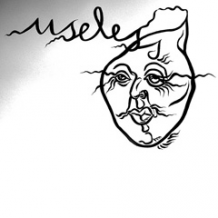






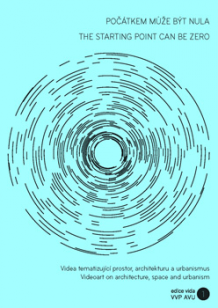




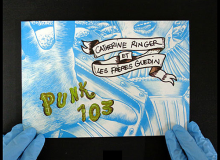
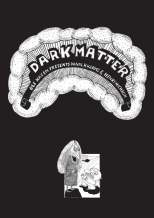
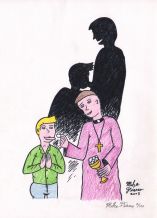
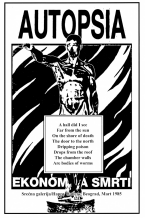


 New book by I.M.Jirous in English at our online bookshop.
New book by I.M.Jirous in English at our online bookshop.
Comments
There are currently no comments.Add new comment